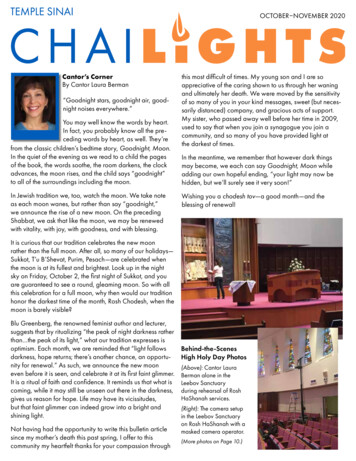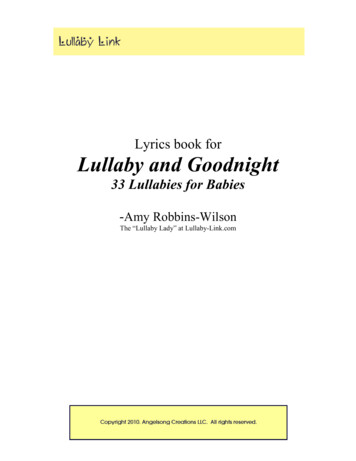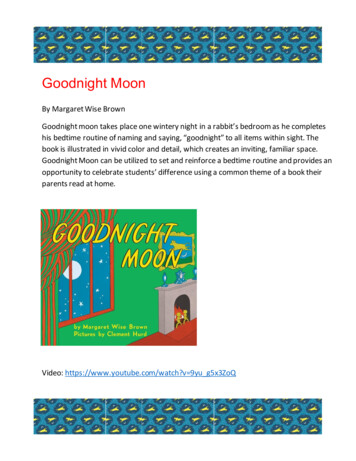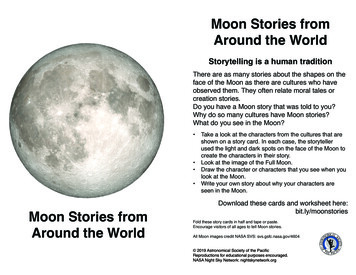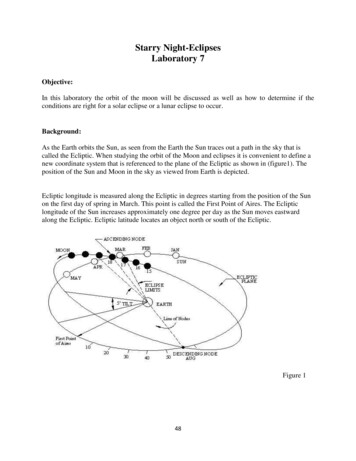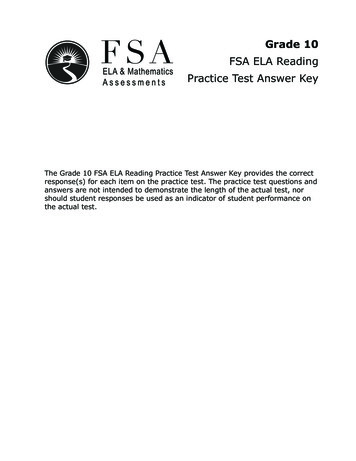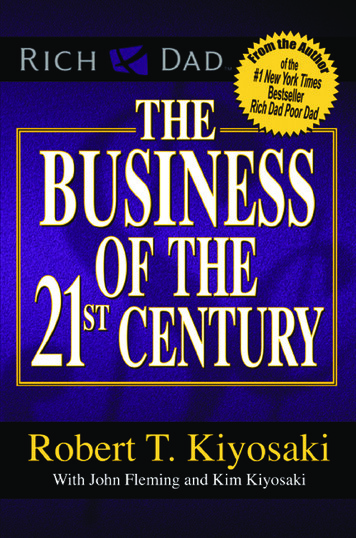
Transcription
THEOFTHESTCENTURY21THEOFTHE21 CENTURYST
Other Best-Selling Books in the Rich Dad SeriesRich Dad Poor DadWhat the Rich Teach Their Kids About Money That the Poor and Middle Classes Do NotRich Dad’s CASHFLOW QuadrantRich Dad’s Guide to Financial FreedomRich Dad’s Guide to InvestingWhat the Rich Invest in That the Poor and Middle Classes Do NotRich Dad’s Rich Kid Smart KidGive Your Child a Financial Head-StartRich Dad’s Retire Young Retire RichHow to Get Rich Quickly and Stay Rich ForeverRich Dad’s ProphecyWhy the Biggest Stock Market Crash in History Is Still Coming and How You Can Prepare Yourself and Profit from It!Rich Dad’s Success StoriesReal-Life Success Stories from Real-Life People Who Followed the Rich Dad LessonThe Business Schoolfor People Who Like Helping PeopleThe Eight Hidden Values of a Network Marketing BusinessRich Dad’s Guide to Becoming Rich Without Cutting Up Your Credit CardsTurn “Bad Credit” into “Good Credit”Rich Dad Poor Dad for TeensThe Secrets About Money—That You Don’t Learn in School!Rich Dad’s Before You Quit Your Job10 Real-Life Lessons Every Entrepreneur Should Know AboutBuilding a Multimillion-Dollar BusinessWhy We Want You to Be Richby Robert Kiyosaki and Donald TrumpProvide Insight on How to Improve Your Financial FutureRich Dad’s Increase Your Financial IQHow to Get Smarter with Your MoneyRich Woman: A Book on Investing for WomenHow to Take Charge of Your Money and Your LifeConspiracy of the Rich: The 8 New Rules of MoneyLearn How the Worst of Times Is Actually an Opportunity in the Making!
THEOFTHESTCENTURY21Robert T. KiyosakiTHE21 CENTURYWith John Fleming and Kim KiyosakiOFTHEAn imprint ofST
If you purchase this book without a cover, you should be aware that this book may have been stolenproperty and reported as “unsold and destroyed” to the publisher. In such case, neither the author northe publisher has received any payment for this “stripped book.”This publication is designed to provide general information regarding the subject matter covered.However, laws and practices often vary from state to state and are subject to change. Because eachfactual situation is different, specific advice should be tailored to the particular circumstances. Forthis reason, the reader is advised to consult with his or her own advisor regarding that individual’sspecific situation.The author has taken reasonable precautions in the preparation of this book and believes the factspresented in the book are accurate as of the date it was written. However, neither the author nor thepublisher assume any responsibility for any errors or omissions. The author and publisher specificallydisclaim any liability resulting from the use or application of the information contained in this book,and the information is not intended to serve as legal, financial, or other professional advice related toindividual situations.Copyright 2010 by Robert T. KiyosakiAll rights reserved.Published by DreamBuilders, an imprint of VideoPlus, L.P., in association with CASHFLOWTechnologies, Inc.CASHFLOW Technologies, Inc.4330 N. Civic Center Plaza, Suite 100Scottsdale, Arizona 85251U.S.A.800.308.3585www.richdad.comCASHFLOW, Rich Dad, Rich Dad’s Advisors, Rich Dad’s Seminars, ESBI and B-I Triangle areregistered trademarks of CASHFLOW Technologies, Inc.200 Swisher RoadLake Dallas, Texas 75065U.S.A.800.752.2030Tel: VideoPlus is a registered trademark of VideoPlus, L.P.Printed in the United States of AmericaDesigned by DreamBuilders, an imprint of VideoPlus, L.P.
DedicationI dedicate this book, The Business of the 21st Century, to the millions of you who areat a crossroads in life—who are affected by the current economic crisis and feelinghelpless as to what you can do to secure your financial future. I want you to knowthat these are, despite what they may seem, the best times to take control of yourfuture. I have spent my life educating people on how to attain financial freedom, andI know that this book, like the others in my Rich Dad series, will provide you withinsight needed to create—and sustain—wealth for years to come. Once you learnthe truth of how money works and the business opportunities available to you in the21st century, you will be able to begin building the life you desire.
ContentsAcknowledgments.xIntroduction.xiPart One: Take Control of Your Future1. The Rules Have Changed. 32. The Silver Lining. 93. Where Do You Live?. 154. Your Core Financial Values. 195. The Mindset of an Entrepreneur. 236. It’s Time to Take Control!. 27Part Two: One Business—Eight Wealth-Building Assets7. My Years in the Business. 338. It’s Not About Income: It’s About Assets That Generate Income. 399. Asset #1: A Real-World Business Education. 4310. Asset #2: A Profitable Path of Personal Development. 4911. Asset #3: A Circle of Friends Who Share Your Dreams and Values. 5512. Asset #4: The Power of Your Own Network. 5913. Asset #5: A Duplicable, Fully Scalable Business. 6514. Asset #6: Incomparable Leadership Skills. 7115. Asset #7: A Mechanism for Genuine Wealth Creation. 7716. Asset #8: Big Dreams and the Capacity to Live Them. 8317. A Business Where Women Excel. 87Part Three: Your Future Starts Now18. Choose Wisely. 9719. What It Takes. 10320. Living the Life. 11121. The Business of the 21st Century. 115About the Authors. 119Rich Dad’s Resources. 122ix
AcknowledgmentsI would like to thank my wife, Kim, for her continued love and support, as well asmy Rich Dad family who has helped me get the message of financial education outto millions of people around the globe.I would also like to thank John Fleming for his invaluable insight on networkmarketing, and Stuart Johnson, Reed Bilbray, and the staff at VideoPlus for theirassistance in putting this book together.Lastly, I would like to thank John David Mann and J.M. Emmert for bringing theircrafts and passions to this project.x
IntroductionThe economy is in tatters; your job is in trouble—if you still have a job. Andyou know what? I’ve been saying it for years.It took a global financial meltdown for most to hear it. But this book isn’t abouthow or why everything has gone to hell in a handbasket. It’s about why this bad newsturns out to be very good news—if you know what to do about it.I learned about business from two people: my father, who was a very welleducated, highly placed government employee, and my best friend’s father, who wasan eighth-grade dropout and self-made millionaire. My real father suffered financialproblems his entire life and died with little to show for all the long years of hardwork; my best friend’s dad became one of the richest men in Hawaii.I thought of these two men as my “poor dad” and my “rich dad.” I loved andadmired my real dad very much, and vowed that I would help as many peopleas possible avoid suffering the kinds of indignities and failures that plaguedhis path.After I left home, I had all kinds of experiences. I served in the Marines asa helicopter pilot in Vietnam. I went to work for Xerox, starting out as theirworst salesperson and leaving four years later as their best. After leaving Xerox,I developed several multimillion-dollar international businesses and was able toretire at the age of 47 to pursue my passion—to teach others how to build wealthand live the lives they dream of living, instead of settling for mediocrity andsullen resignation.In 1997, I wrote about my experiences in a little book. I must have toucheda chord with at least a few readers: Rich Dad Poor Dad shot to the top of the NewYork Times best-seller list and stayed there for more than four years, and has beendescribed as “the best-selling business book of all time.”Since then, I’ve put out a whole series of Rich Dad books, and although each onehas a slightly different focus, they all deliver the exact same message as that first book,and it’s the message at the heart of this book you now hold in your hands:Take responsibility for your finances—or get used to taking orders for the restof your life. You’re either a master of money or a slave to it. Your choice.xi
IntroductionI was incredibly fortunate in my life to have experiences and mentors thatshowed me how to build genuine wealth. As a result, I was able to retire completelyfrom any need to work ever again. Up until that time, I was working to build myfamily’s future. Since then, I’ve been working to help build yours.For the past ten years, I have devoted my life to finding the most effective andpractical ways to help people transform their lives in the 21st century by learninghow to build genuine wealth. Through our Rich Dad books, my partners and I havewritten about many different types and forms of enterprise and investment. Butduring these years of intensive research, I have come across one business model inparticular that I believe holds the greatest promise for the largest number of peopleto get control of their financial lives, their futures, and their destinies.One more thing. When I say genuine wealth, I’m not talking about money alone.Money is part of it, but it’s not the whole. Building genuine wealth is as much aboutthe builder as it is about the built.In this book, I’m going to show you why you need to build your own business,and exactly what kind of business. But this isn’t just about changing the type ofbusiness you’re working with; it’s also about changing you. I can show you how tofind what you need to grow the perfect business for you, but for your business togrow, you will have to grow as well.Welcome to the business of the 21st century.xii
Part ONETake Control of Your FutureWhy you need to havea business of your own
Chapter 1The Rules Have ChangedWe live in troubled times. The last few years have brought us a steady parade of fearand panic in the headlines, boardrooms, and kitchen tables across America. Globalization,outsourcing, downsizing, foreclosures, subprime mortgages and credit default swaps, ponzischemes, Wall Street fiascoes, recession it’s just one piece of bad news after another.During the first few months of 2009, U.S. company layoffs reached about a quartermillion per month. As I write this in late 2009, unemployment is at 10.2 percent andstill rising, and underemployment (where your job stays in place but your hours and payare drastically cut back) is even worse. The rampant decline in gainful employment is aravaging epidemic to which few are immune. From executives and middle managers toadministration employees and blue-collar workers, from bankers to retail clerks, all are atrisk. Even the healthcare industry, until recently considered a job-safe zone, is trimmingaway significant chunks of its workforce.In a 2009 USA Today survey, 60 percent of Americanspolled said they see today’s economic situation as thebiggest crisis in their lifetime.In the fall of 2008, a lot of people’s retirement portfolios suddenly lost half theirvalue—or more. Real estate crashed. What people thought were their solid, reliableassets turned out to be about as solid as water vapor. Job security is gone, a thing ofthe past. In a 2009 USA Today survey, 60 percent of Americans polled said they seetoday’s economic situation as the biggest crisis in their lifetime.Of course, you already know all this. But here’s what you may not know: Noneof this is really news. Sure, it took a major economic crisis for people to start wakingup to the fact that their livelihoods were at risk. But your income didn’t become atrisk overnight—it was always at risk.Most of the U.S. population has been living for years on the knife-edge precipicebetween solvency and ruin, relying on the next paycheck or two to meet each3
C hapter 1: The Rules Have Changedmonth’s expenses, typically with only a very thin cushion of cash savings—or moreoften, no cushion at all. That paycheck is called “trading your time for money,” andduring a recession, it is the least reliable source of income there is. Why? Becausewhen the number of employed people starts dropping, there is less disposable incomein circulation to pay for your time.I Told You SoNot to be an I-told-you-so, but I told you so.I’ve been saying this for years: There is no longer such a thing as a safe andsecure job. Corporate America is a 20th-century dinosaur, trembling on the edge ofextinction, and the only way for you to have a genuinely secure future is for you totake control of that future.Here’s what I wrote in 2001, in a book titled The Business School for People WhoLike Helping People:In my opinion, the United States and many Western nations have a financialdisaster coming, caused by our educational system’s failure to adequately provide arealistic financial education program for students.That same year, in an interview for Nightingale-Conant, I said:If you think mutual funds are going to be there for you, if you want to bet yourlife on the ups and downs of the stock market, that’s your retirement you’re bettingon. What happens if the stock market goes up and then comes crashing down againwhen you’re 85 years old? You have no control. I’m not saying mutual funds are bad.I’m just saying they’re not safe and they’re not smart, and I wouldn’t bet my financialfuture on them.Never before in the history of the world have so many people bet their retirementon the stock market. That is insane. Do you think Social Security is going to be thereto take care of you? Then you also believe in the Easter Bunny.And in an interview I did in March 2005, I said this:The No. 1 strength of a paper asset is its liquidity—and that is also its No. 1weakness. We all know there’s going to be another market crash and we’re going to bewiped out again. Why would you do that?So what just happened? There was another market crash and many people gotwiped out again. Why? Because our habits and mindset caught up with us.In 1971, the American economy went off the gold standard. This happenedwithout the approval of Congress, by the way, but the important thing is that ithappened. Why is that significant? Because it cleared the way for us to start printing4
The Business of the 21st Centurymore and more money, as much as we liked, without it being tied to any actual,hard, real value.This shift away from reality opened the gates for the biggest economic boom inhistory. Over the next three and a half decades, the American middle class exploded.As the dollar devalued and the on-the-books value of real estate and other assetsinflated, ordinary people became millionaires. Suddenly credit was available toanyone, anytime, anywhere, and credit cards began popping up like mushrooms aftera spring rain. To pay off those credit cards, Americans started using their homes asATMs, refinancing and borrowing, borrowing and refinancing.After all, real estate always keeps going up in value, right?Wrong. By 2007 we had pumped as much hot air into this financial balloon asit could take—and the fantasy came crashing down to earth again. And it wasn’t justLehman Brothers and Bear Stearns that collapsed. Millions lost their 401(k)s, theirpensions, and their jobs.The number of people living officially below the povertyline is rising rapidly. The number of people who areworking beyond the age of 65 is increasing.In the 1950s, when General Motors was the most powerful corporation inAmerica, the press picked up a statement by GM’s president and turned it into aslogan that carried for decades: “As GM goes, so goes the nation.” Well, folks, thatmay not be all good news, because where GM went in 2009 was into bankruptcy,and by that same summer, the state of California was paying its bills with IOUsinstead of cash.Right now, the percentage of Americans who own their homes is dropping.Mortgage foreclosures are at an all-time high. The number of middle-class families isdropping. Savings accounts are smaller, if they exist at all, and family debt is greater.The number of people living officially below the poverty line is rising rapidly. Thenumber of people who are working beyond the age of 65 is increasing. The numberof new bankruptcies is going through the roof. And many Americans do not haveenough to retire—not even close.Has all this bad news got your attention? Sure it has, and you’re not alone.Americans everywhere have finally stopped rolling over and hitting the Snooze button.Great! Now you’re awake to what’s going on, and it isn’t pretty. So let’s take a deeperlook and see what it really means—and what there is you can do about it.It’s a New CenturyWhen I was a kid, my parents taught me the same formula for success that youprobably learned: Go to school, study hard, and get good grades so you can get asecure, high-paying job with benefits—and your job will take care of you.5
C hapter 1: The Rules Have ChangedBut that’s Industrial-Age thinking, and we’re not in the Industrial Ageanymore. Your job is not going to take care of you. The government will not takecare of you. Nobody’s going to take care of you. It’s a new century, and the ruleshave changed.My parents believed in job security, company pensions, Social Security, andMedicare. These are all worn-out, obsolete ideas left over from an age gone by.Today job security is a joke, and the very idea of lifetime employment with asingle company—an ideal so proudly championed by IBM in its heyday—is asanachronistic as a manual typewriter.Many thought their 401(k) retirement plans were safe. Hey, they were backed byblue-chip stocks and mutual funds, what could go wrong? As it turned out, everythingcould go wrong. The reason these once-sacred cows no longer give any milk is thatthey are all obsolete: pensions, job security, retirement security—it’s all IndustrialAge thinking. We’re in the Information Age now, and we need to use InformationAge thinking.Fortunately, people are starting to listen and learn. It’s a shame that it takessuffering and hardship to bring the lesson home, but at least the lessons are hittinghome. Every time we experience a major crisis—the dot-com bust, the economicaftermath of 9/11, the financial panic of ’08, and recession of ’09—more peoplerealize that the old safety nets just won’t hold up anymore.The corporate myth is over. If you’ve spent years climbing the corporate ladder,have you ever stopped to notice the view? What view, you ask? The rear end of theperson in front of you. That’s what you get to look forward to. If that’s the way youwant to view the rest of your life, then this book probably isn’t for you. But if youare sick and tired of looking at someone else’s behind, then read on.Don’t Be Fooled AgainAs I write this, unemployment is still on the rise. By the time you read thesewords, who knows? The situation may have changed. Don’t be fooled. Whenemployment and real estate values turn around and credit loosens up again, as theyinevitably will, don’t be lulled into that same-old sense of false security that got youand the rest of the world into this mess in the first place.In the summer of 2008, gas prices were soaring over 4 a gallon. SUV sales sanklike a stone, and suddenly everyone was on the small-car-and-hybrid bandwagon. Butlook what happened next. By 2009, gas prices had fallen back down below 2—andso help me, people started buying SUVs again!What?! Do we really think fuel prices are going to stay nice and low? That gasprices are down for good now, and therefore gas-guzzlers make perfect sense to buy?Can we really be that shortsighted? (I’m trying to be nice here. The word I was goingto use was “stupid.”)Unfortunately, the answer is yes. We aren’t just fooled once; we let ourselvesbe fooled over and over again. We all grew up hearing the fable of the ant and the6
The Business of the 21st Centurygrasshopper, but the overwhelming majority of us keep living with the foresight ofa grasshopper anyway.Don’t be distracted by the headlines. There is always some idiotic buzz goingon that tries to pull your attention away from the serious business of building yourlife. It’s just noise. Whether it’s terrorism, recession, or the latest election-cyclescandals, it’s got nothing to do with what you need to be doing today to buildyour future.During the Great Depression, there were people who made fortunes. And duringthe greatest boom times, like the real estate surge of the ’80s, there were millionsand millions of people who neglected to take charge of their future—who ignoredeverything I’m going to share with you in this book—and ended up struggling orbroke. Most of them, in fact, are still struggling or broke today.The economy is not the issue. The issue is you.Are you angry at the corruption in the corporate world? At Wall Street and thebig banks that let this happen? At the government for not doing enough, or for doingtoo much, or for doing too much of the wrong things and not enough of the rightthings? Are you angry at yourself for not taking control sooner?Life is tough. The question is, what are you going to do about it? Moaning andgroaning won’t secure your future. Neither will blaming Wall Street, the big bankers,corporate America, or the government.If you want a solid future, you need to create it. You can take charge of your futureonly when you take control of your income source. You need your own business.7
ROBERT T. KIYOSAKIInvestor, Entrepreneur, Financial Education Advocate, andBest-Selling AuthorRobert Kiyosaki is the author of Rich Dad Poor Dad—the No. 1 personal finance book of all time—a book thatchallenged and changed the way tens of millions of peoplethink about money. Rich Dad Poor Dad ranks as the longestrunning best-seller on all four of the lists that report toPublisher’s Weekly—The New York Times, Business Week, The Wall Street Journal, andUSA Today—and was named “USA Today’s No. 1 Money Book” two years in a row. Itis the third-longest-running “how-to” best-seller of all time.With perspectives on money and investing that often contradict conventionalwisdom, Robert has earned a reputation for straight talk, irreverence, and courage. Hispoint of view that the “old” advice—get a good job, save money, get out of debt, investfor the long term in a diversified portfolio of stocks, bonds, and mutual funds—is “bad”(both obsolete and flawed) advice, challenges the status quo. His assertion that “yourhouse is not an asset” stirred controversy, but has been proven to be accurate for manyhomeowners.Other Rich Dad titles hold four of the top ten spots on Nielsen Bookscan List’slife-to-date sales from 2001–2008. Translated into fifty-one languages and available in109 countries, the Rich Dad series has sold over 28 million copies worldwide and hasdominated best-seller lists across Asia, Australia, South America, Mexico, and Europe.In 2005, Robert was inducted into the Amazon.com Hall of Fame as one of thatbookseller’s top twenty-five authors. There are currently twenty-seven books in the RichDad series. Among the notable titles is Why We Want You to Be Rich: Two Men—OneMessage, a book written with Robert’s good friend Donald Trump in 2006 that debutedat No. 1 on the New York Times best-seller list. Already, the two friends and businessgiants are at work on a second book to be published in 2010.Robert’s latest books include The Real Book of Real Estate, a compilation of reallife lessons and advice from veteran real estate investors and advisors to Robert, andConspiracy of the Rich: The 8 New Rules of Money, an innovative and groundbreaking freeinteractive online book that has garnered an unbelievable amount of unique visits andclimbed as high as No. 5 on the New York Times how-to tradepaper best-seller list.Robert has been featured on shows such as Larry King Live and Oprah, and wasrecently featured in TIME magazine’s “10 Questions” column, a notable Q&A columnthat has featured such names as director Spike Lee and actor Michael J. Fox, amongothers.In addition to his books, Robert writes a column—“Why the Rich Are GettingRicher”—for Yahoo! Finance and a monthly column titled “Rich Returns” forEntrepreneur magazine.119
Ideal Prospecting Toolsfor Building Your Network Marketing Business!When Robert Kiyosaki talks, people listen!New Book and Audio CD from Robert Kiyosaki!And Robert has plenty to say about why network marketing is the business ofthe 21st century! This new book and audio will help you show distributors andprospects how network marketing: Offers a worldwide network and global reach Produces a duplicable, fully scalable business Develops strong, effective leaders Creates genuine wealthShare the eight wealth-building assets of network marketing that can buildstronger financial futures and happier lives in tough economic times!The Business of the 21st Century BookThe latest book from Robert on the power ofnetwork marketing!This is the definitive book for helping you get started in a networkmarketing business! In The Business of the 21st Century, RobertKiyosaki shows you that while these may be economic hard timesfor the majority, for some entrepreneurs, they are times ripe witheconomic potential. Perfect for recruiting and distributor training.142-page paperback book.The Business of the 21st Century AudioThe ideal business-building tool!Robert Kiyosaki explains how you can take advantage of theseeconomic times to build wealth and create a happier life throughnetwork marketing! Multimillionaire investor, business owner,educator, speaker, and the best-selling author of the Rich DadPoor Dad series is sold network marketing and wants to sharehis insights with you. Approximately 27 minutes.Free chapter, audio and video exceprts available atwww.TheBusinessofthe21stCentury.com!Published by
Rich Dad’s CASHFLOW Quadrant Rich Dad’s Guide to Financial Freedom Rich Dad’s Guide to Investing What the Rich Invest in That the Poor and Middle Classes Do Not Rich Dad’s Rich Kid Smart Kid Give Your Child a Financial Head-Start Rich Dad’s Retire Young Retire Rich How to Get Rich Quickly a
